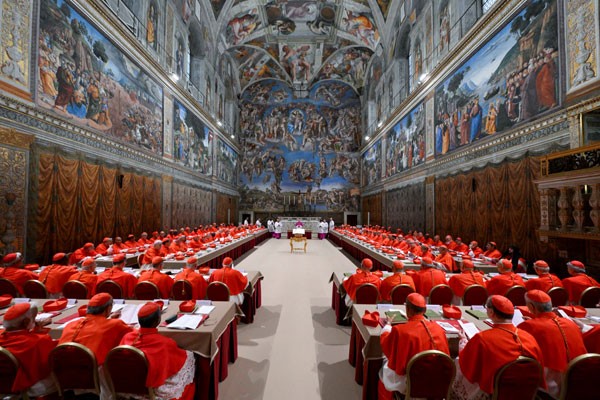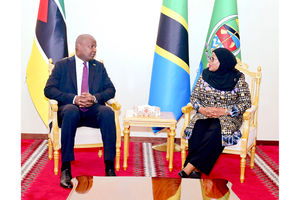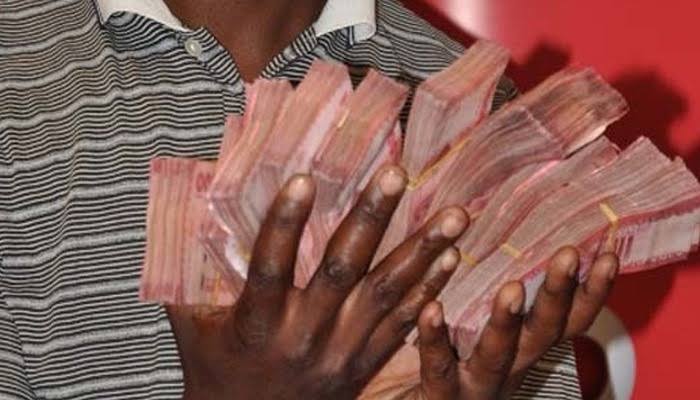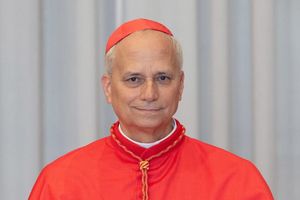Breaking: Catholic Church gets a new Pope on the second day of Conclave
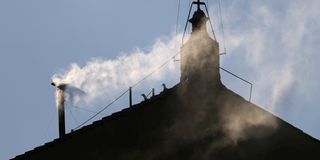
What you need to know:
- The identity of the newly elected Pope, as well as the papal name he will assume, is expected to be announced shortly.
The Catholic Church has a new Pope, following the successful conclusion of the papal conclave on its second day.
White smoke billowed from the chimney of the Sistine Chapel—an age-old signal that a new pontiff has been chosen by the College of Cardinals. The chapel’s bells rang shortly afterward, confirming the news and sparking celebration among crowds gathered in St. Peter’s Square.
The identity of the newly elected Pope, as well as the papal name he will assume, is expected to be announced shortly.
The election came on the first full day of voting by the 133 cardinal electors, who secluded themselves behind the Vatican’s medieval walls on Wednesday afternoon.
A joyous crowd in St. Peter’s Square cheered and applauded as the first puffs of smoke emerged from a small chimney on the roof of the Sistine Chapel, where the cardinals have been holding their secret ballot.
"Long live the Pope!" the crowds cheered in the bright sunshine. "We have a Pope!" read one sign held aloft.
The identity of the Pope and the name he has chosen as pontiff will be announced shortly from the central balcony of St. Peter’s Basilica.
The new Pope will then step forward to deliver his first public address and blessing to the gathered crowds.
Sister Mona Lisa, a Brazilian nun, was in the square waving a Brazilian flag, in tears. “I am so happy we have a Pope,” she said.
Pope Francis died on April 21 after leading the 1.4-billion-member Church for 12 years. During his reign, he sought to open up the staid institution to the modern world, enacting a range of reforms and allowing debate on divisive issues such as women’s ordination and better inclusion of LGBT Catholics.
While no clear favourites had emerged to succeed him, Italian Cardinal Pietro Parolin—who served as the Vatican’s number two under Francis—and Filipino Cardinal Luis Antonio Tagle were considered frontrunners.
Other papabili—potential papal candidates in Italian—included France’s Jean-Marc Aveline, Hungary’s Péter Erdő, American Robert Prevost, Italy’s Pierbattista Pizzaballa, and Filipino Pablo Virgilio David.
The cardinals faced a key decision: whether to build on Francis’ vision of greater openness and reform or to elect a more conservative figure.
During the conclave, their only communication with the outside world was through the smoke emerging from the chimney—black for no pope yet picked, white for a successful election by a two-thirds majority.
An initial inconclusive vote was held on Wednesday evening, followed by two more on Thursday morning.
The cardinals returned to the Sistine Chapel at 4 p.m. (1400 GMT), and at around 6:08 p.m. (1608 GMT), white smoke emerged.
During the conclave, the cardinals were sequestered from the world and sworn to secrecy, with their phones and computers confiscated. They were shuttled between the Sistine Chapel for voting and two Vatican guesthouses for sleeping and dining.
Historically, the average number of ballots it has taken to elect a pope over the past 10 conclaves is 7.2. Pope Francis was elected after five ballots in 2013.

